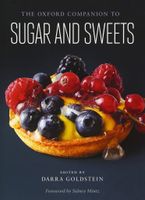Advertisement
Foreign Influences
Published 2015
The Spanish left a legacy of sweets, most of which are egg-yolk-based desserts, biscuits, and cookies. See spain. From the 1600s to the late 1800s, egg whites were used as a binding agent in building the walls of churches and cathedrals. Local women were taught by the nuns to make egg-yolk-based classics such as flans, yemas (egg yolks and sugar pastry balls dipped in sugar or hard caramel), and tocino del cielo (a very rich flan made of egg yolks, sugar, and butter steamed in small molds in a bain-marie or water bath). See convent sweets; egg yolk sweets; and flan (pudím). Many bakeries were established near churches; the most famous is the 140-year-old Panaderia de Molo in Iloilo, Visayas, which still produces egg-yolk-based biscuits such as galletas, biscocho, barquillos, hojaldres, broas, and rosquetes.


